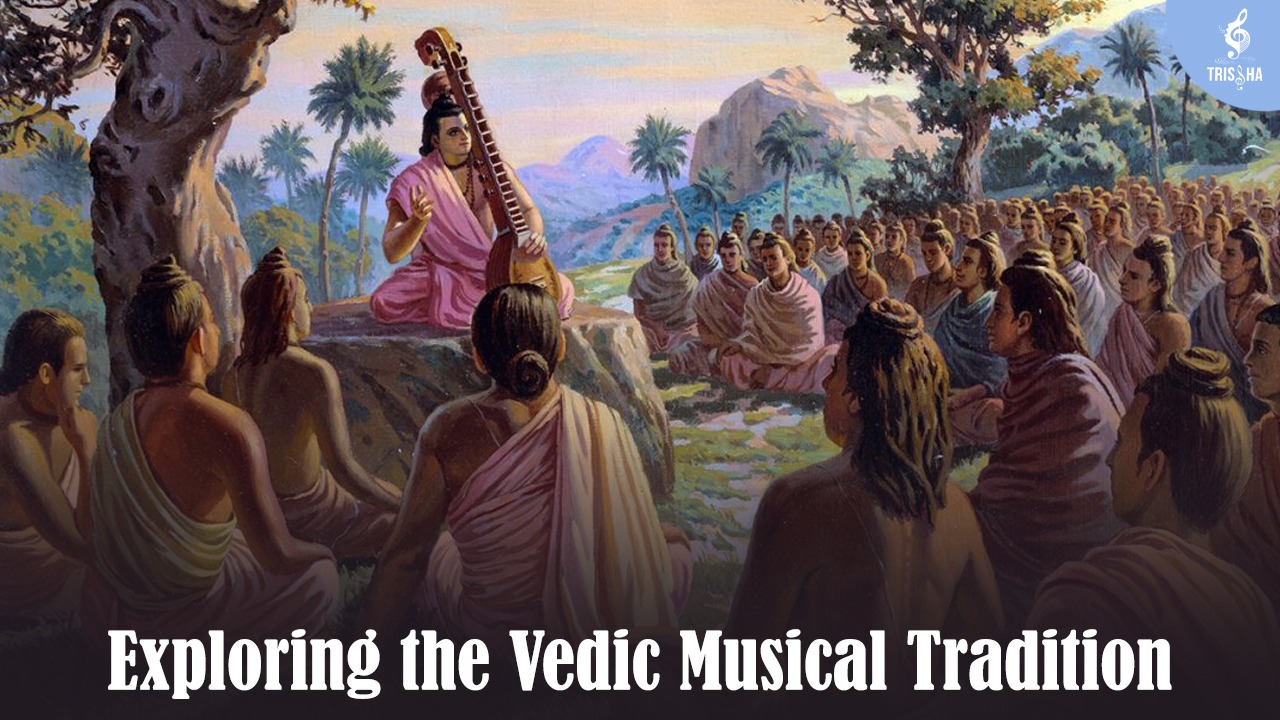Exploring the Vedic Musical Tradition
The Vedic musical tradition, rooted in the ancient texts of the Vedas, represents one of the oldest and most profound musical heritages in the world. Spanning thousands of years, this tradition is not only a testament to the rich cultural and spiritual history of India but also serves as a foundation for much of the classical music that followed.
Origins and Historical Context:
The Vedas, composed between 1500 and 500 BCE, are a collection of hymns, mantras, and chants. They are divided into four primary texts: the Rigveda, Samaveda, Yajurveda, and Atharvaveda. Among these, the Samaveda is most directly related to music. It comprises melodies and chants that were used in rituals and sacrifices, which were integral to Vedic religious practices.
The Samaveda is unique because it sets the hymns of the Rigveda to music. The term “Sama” itself means “melody,” indicating the significance of musicality in these chants. The musical notations in the Samaveda are among the earliest forms of written music, showing the use of notes and scales that laid the groundwork for subsequent musical traditions in India.
Musical Structure and Elements:
Vedic music is characterized by its strict adherence to specific scales and meters. The chants are typically monophonic, meaning they consist of a single melodic line without harmony. This simplicity, however, does not detract from their beauty and complexity. The melodies are designed to evoke a spiritual atmosphere, aiding in meditation and worship.
The primary scale used in Vedic music is the seven-note scale, which is similar to the modern diatonic scale but with specific intonations that give it a distinct flavor. These notes are referred to as “svaras,” and their precise rendition is crucial for the correct performance of Vedic chants. The rhythm, or “chandas,” is equally important, with each chant adhering to a specific metrical pattern that governs the length and emphasis of syllables.
Instruments and Performance:
In Vedic times, music was predominantly vocal. However, several instruments were used to accompany the chants. The most notable among these is the “veena,” a stringed instrument that is still prominent in Indian classical music today. Other instruments included the “dumdum,” a type of drum, and various wind instruments like the “flute” and “conch.”
Performances of Vedic music were typically conducted by priests during rituals. These performances were not mere recitations but were imbued with deep spiritual significance. The act of chanting was seen as a form of worship, with the vibrations of the sound believed to connect the earthly realm with the divine.
Influence on Classical Music:
The Vedic musical tradition has had a profound influence on the development of Indian classical music. The concepts of “raga” (melodic framework) and “tala” (rhythmic cycle) that are central to Indian classical music can trace their origins back to the Vedic period. The meticulous attention to pitch, rhythm, and the emotional expression found in the Vedas provided a template that classical musicians expanded upon.
The spiritual and philosophical underpinnings of Vedic music also permeate Indian classical music. The idea that music is a pathway to the divine, a concept that is central to the Vedic tradition, continues to be a guiding principle for classical musicians.
Contemporary Relevance:
In modern times, the Vedic musical tradition is preserved and propagated by various scholars and practitioners who continue to study and perform these ancient chants. Festivals, academic conferences, and digital platforms have made Vedic music more accessible to a global audience. Its meditative and spiritual qualities have also found a place in contemporary wellness practices, such as yoga and meditation, highlighting its timeless relevance.
In conclusion, the Vedic musical tradition is a cornerstone of India’s rich cultural heritage. Its ancient melodies and rhythms not only offer a glimpse into the spiritual practices of early civilizations but also continue to inspire and influence modern music and spiritual practices. The profound connection between music and spirituality established by the Vedas remains a testament to the enduring power of sound in human experience.







There are no comments